A prova di scemo: the real time of a sculpture
(error-proof personal experience)
by Luca Scarabelli
Act I
Trying A prova di scemo is to activate a well-known methodology to understand what sculpture is or in any case to ask a few more questions about its specificity, about the dialectic between material space and body, after the sculpture is dead or was supposed to be dead.
That's the procedure.
Approaching the sculpture A prova di scemo and looking around (perception).
Climbing on the sculpture A prova di scemo (it is different from the prohibition not to touch the sculpture).
Stand up in balance, fairly stable, and take a plastic pose at will (freestyle).
Orientation in the space of sculpture (self-perception).
Maintain the position as much as you want and possibly vary it (performative act).
Get down from the sculpture A prova di scemo (detachment).
Looking around one more time (question).
Alternative to feel the absence of the body: look at the sculpture A prova di scemo and not to risk anything, walk away (conservative act).
A prova di scemo: the real time of a sculpture
(error-proof personal experience)
by Luca Scarabelli
Act II
A prova di scemo could be a pedestal sculpture, when the sculpture has abandoned the pedestal by now for a long time. In fact, A prova di scemo tests the very idea of stalemate. A stalled plastic mold? There is a touch of physics in trying it out to anticipate the idea of a possible movement. Let's just say it right away.
The sculpture, almost always and eternally, apart from some results found during the ’900, is to be considered a sort of tank guard, it does not move and does not move, it moves around instead, you can be near or far, sometimes inside, but it is always there in the same place.
Umberto's sculpture underlines this trend, but betraying it in its attitude, it pulls it and tells it to stop. It's giving it the kiss. It's still, stuck, but it wants to move. Other sculptures do indeed move, with movements sometimes abrupt and sometimes very slow, others to accompany, others unexpected... especially in the works in which he measures the distances between us and things, between things and the space they occupy through potentially active elements.
On these roller skates, we can also call this sculpture in freedom and friendship (in the time Umberto used these two titles to indicate this work), you don't move, just in case you try yourself like fools to try to move. Skates, usually when they are skates and not interpretations of skates, are prostheses of the body that allow to accelerate the movement, to shorten the time and space when crossing places. Just don't slip and don't fall.
With these skates the test fails early. They are shoes of the impossibility.
This impossibility transforms the “passenger” into a statue, with the possibility of moving but being careful and standing still on the spot. You make contact. It is ideally centered, you are there and you pose as in a sketch. You are a drawing of sculpture, you share the same space, you are a volume of sculpture even if you are not “sculpture”, not even for a minute...
In the meantime, each job is a pair of shoes, one for each foot, just as you expect to find them. The reference is to the traditional skates for recreational use, those with the arrangement of the four square wheels that allow you to move on the ground, run and make evolutions. The production includes examples in Cor-Ten steel and others in Carrara marble, originally with prototypes in galvanized steel. On the support surface there is a number related to the number of shoes (I tried A prova di scemo with the number 43½, which was a bit big for me, but it was comfortable to stand on), so they are made to measure. The pose that I tried to interpret in my stay was the one that was a bit fixed, by memory as in the photographs of August Sander. Better, I looked for the attitude, the pause, so as not to get carried away in more complex situations. Just with a few tricks in preparation for the meeting, with a dedicated outfit that recalled a strange craft: an overturned t-shirt, a stained apron, bare legs and feet. An objectively Sander-like thing then, with a hieratic and enough detached look. At that moment I thought that it is a work that moves the gaze, the world looks at it from its place and fixes the perception. The weight is lightened, you are on the edge of space.
A prova di scemo si direbbe una scultura piedistallo, quando la scultura ha abbandonato il piedistallo ormai da tempo. In realtà A prova di scemo mette alla prova l’idea stessa dello stallo. Una forma plastica in stallo? C’è un che di fisico nel provarla per anticipare l’idea di un possibile movimento. Che diciamolo subito non ci sarà.
La scultura, quasi da sempre ed eternamente, a parte qualche risultato che si trova scorrendo il ’900, è da considerare una sorta di paracarro, non si sposta e non si muove, ci si muove intorno invece, puoi starci vicino o lontano, qualche volta dentro, ma lei è sempre lì nello stesso posto.
La scultura di Umberto sottolinea questa tendenza, ma tradendola nella sua attitudine, la strattona e gli dice stop. Gli fa il verso. È ferma, bloccata, ma vorrebbe muoversi. Altre sue sculture si muovono in effetti, con movimenti a volte bruschi e altri lentissimi, altri da accompagnare, altri inaspettati… sopratutto nei lavori in cui misura le distanze tra noi e le cose, tra le cose e lo spazio che occupano attraverso elementi potenzialmente attivi.
Su questi pattini a rotelle, possiamo chiamarla anche così questa scultura in libertà e amicizia (nel tempo Umberto ha usato questi due titoli per indicare questo lavoro), non ci si muove, casomai ci si mette alla prova come stupidi per tentare di muoversi. I pattini di solito quando sono pattini e non interpretazioni di pattini sono protesi del corpo che permettono di accelerare lo spostamento, di accorciare il tempo e lo spazio nell’attraversare i luoghi. Basta non scivolare e non cadere.
Con questi pattini la prova fallisce in anticipo. Sono pattini dell’impossibilità.
Questa impossibilità trasforma il “passeggero” in statua, con la possibilità di muoversi ma stando attenti e fermi sul posto. Si stabilisce un contatto. Ci si fa idealmente centro, sei lì e posi come in una abbozzo. Sei un disegno della scultura, condividi lo stesso spazio, sei un volume della scultura anche se tu non sei “scultura”, nemmeno per un minuto…Intanto ogni lavoro è una coppia di pattini, uno per piede, giusto come ci si aspetta di trovarli. Il richiamo è ai pattini tradizionali ad uso ricreativo, quelli con la disposizione delle quattro rotelle a quadrato che permettono di muoversi sul terreno, correre e fare evoluzioni. La produzione prevede esemplari in acciaio Cor-Ten e altre in marmo di Carrara, all’origine con prototipi in acciaio zincato. Sulla superficie di appoggio è riportato un numero relativo al numero di scarpe (ho provato A prova di scemo con il numero 43½, che poi mi stava leggermente grande, ma era comodo starci su), quindi sono fatti su misura. La posa che ho cercato di interpretare nel mio starci è stata quella un po’ in fissa, a memoria come nelle fotografie di August Sander. Meglio, ne ho cercato l’atteggiamento, la pausa, per non farmi trasportare in situazioni più articolate. Giusto con qualche accorgimento in preparazione all’incontro, con un outfit dedicato che richiamasse uno strano mestiere: t-shirt rovesciata, grembiule macchiato, gambe e piedi nudi. Una cosa oggettivamente alla Sander quindi, con sguardo ieratico e distaccato quanto basta. In quel momento ho pensato che è un’opera che fa muovere lo sguardo, il mondo lo guardi dal suo posto e fissi la percezione. Il peso si alleggerisce, sei sul bordo dell’im-spazio.
Questo lavoro diciamocelo, è un colpo magistrale all’interno dell’opera tutta di Umberto Cavenago. O comunque a me è sempre piaciuto molto, anche il titolo, con quel riferimento sommesso al mondo del lavoro, della produzione e della progettazione cari ad Umberto, a prova di scemo come dire a prova d’errore… una prova sul limite, una costrizione sul comportamento che evita gli errori di distrazione ad esempio. Quindi Umberto ci orienta all’interno di una procedura, anche di costruzione linguistica, del fare scultura, in piena epoca post-postmoderna. Due volte post. E al moderno fa l’occhiolino, perché la fattura, direi proprio è quasi da architetto brutalista, sta lì e tiene assieme quel materiale rude che trasmette forza, carattere, uguaglianza, decisione, potenza. Nello stesso tempo è semplice e minimale, dal sapore quasi classico. La scultura come un dispositivo quasi relazionale per mettersi alla prova e far muovere il pensiero a zero emissioni. Una “macchina celibe” industrial che ci accompagna nell’agire nel momento che stiamo fermi. Un gioco rivelatore; saliamo, definiamo uno spazio reale, sei nello spazio, partiamo ma non partiamo e falliamo.
L’opera non è più di fronte allo spettatore, è sotto. Ti guardi i piedi e poi si scende.
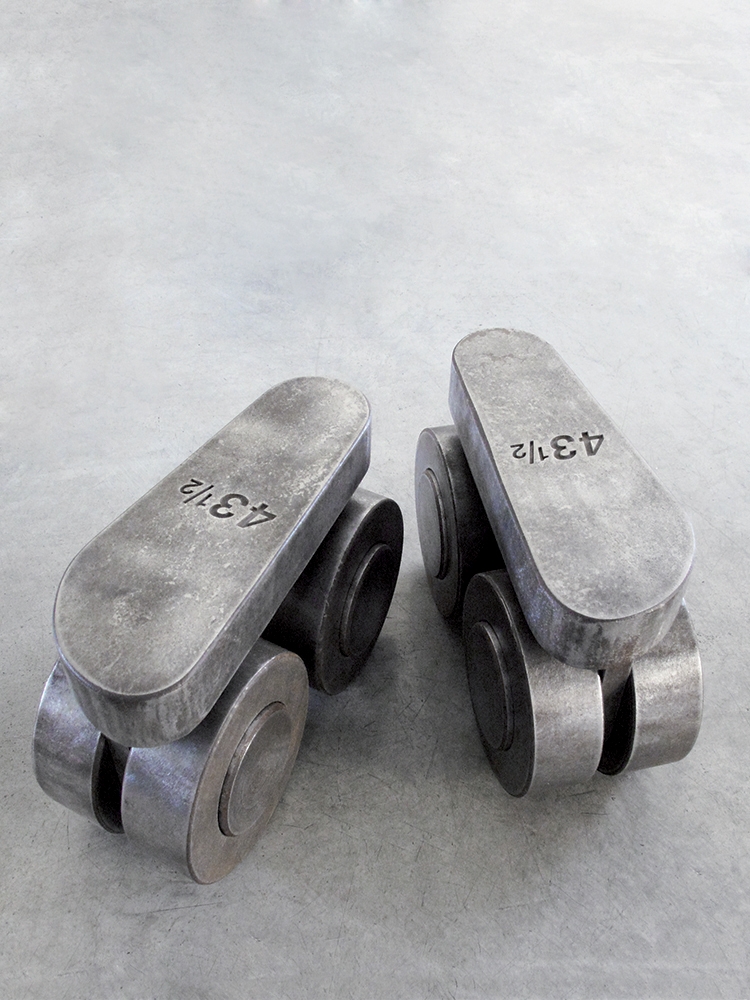
A prova di scemo: the real time of a sculpture
(error-proof personal experience)
by Luca Scarabelli
Act I
Trying A prova di scemo is to activate a well-known methodology to understand what sculpture is or in any case to ask a few more questions about its specificity, about the dialectic between material space and body, after the sculpture is dead or was supposed to be dead.
That's the procedure.
Approaching the sculpture A prova di scemo and looking around (perception).
Climbing on the sculpture A prova di scemo (it is different from the prohibition not to touch the sculpture).
Stand up in balance, fairly stable, and take a plastic pose at will (freestyle).
Orientation in the space of sculpture (self-perception).
Maintain the position as much as you want and possibly vary it (performative act).
Get down from the sculpture A prova di scemo (detachment).
Looking around one more time (question).
Alternative to feel the absence of the body: look at the sculpture A prova di scemo and not to risk anything, walk away (conservative act).
A prova di scemo: the real time of a sculpture
(error-proof personal experience)
by Luca Scarabelli
Act II
A prova di scemo could be a pedestal sculpture, when the sculpture has abandoned the pedestal by now for a long time. In fact, A prova di scemo tests the very idea of stalemate. A stalled plastic mold? There is a touch of physics in trying it out to anticipate the idea of a possible movement. Let's just say it right away.
The sculpture, almost always and eternally, apart from some results found during the ’900, is to be considered a sort of tank guard, it does not move and does not move, it moves around instead, you can be near or far, sometimes inside, but it is always there in the same place.
Umberto's sculpture underlines this trend, but betraying it in its attitude, it pulls it and tells it to stop. It's giving it the kiss. It's still, stuck, but it wants to move. Other sculptures do indeed move, with movements sometimes abrupt and sometimes very slow, others to accompany, others unexpected... especially in the works in which he measures the distances between us and things, between things and the space they occupy through potentially active elements.
On these roller skates, we can also call this sculpture in freedom and friendship (in the time Umberto used these two titles to indicate this work), you don't move, just in case you try yourself like fools to try to move. Skates, usually when they are skates and not interpretations of skates, are prostheses of the body that allow to accelerate the movement, to shorten the time and space when crossing places. Just don't slip and don't fall.
With these skates the test fails early. They are shoes of the impossibility.
This impossibility transforms the “passenger” into a statue, with the possibility of moving but being careful and standing still on the spot. You make contact. It is ideally centered, you are there and you pose as in a sketch. You are a drawing of sculpture, you share the same space, you are a volume of sculpture even if you are not “sculpture”, not even for a minute...
In the meantime, each job is a pair of shoes, one for each foot, just as you expect to find them. The reference is to the traditional skates for recreational use, those with the arrangement of the four square wheels that allow you to move on the ground, run and make evolutions. The production includes examples in Cor-Ten steel and others in Carrara marble, originally with prototypes in galvanized steel. On the support surface there is a number related to the number of shoes (I tried A prova di scemo with the number 43½, which was a bit big for me, but it was comfortable to stand on), so they are made to measure. The pose that I tried to interpret in my stay was the one that was a bit fixed, by memory as in the photographs of August Sander. Better, I looked for the attitude, the pause, so as not to get carried away in more complex situations. Just with a few tricks in preparation for the meeting, with a dedicated outfit that recalled a strange craft: an overturned t-shirt, a stained apron, bare legs and feet. An objectively Sander-like thing then, with a hieratic and enough detached look. At that moment I thought that it is a work that moves the gaze, the world looks at it from its place and fixes the perception. The weight is lightened, you are on the edge of space.
A prova di scemo si direbbe una scultura piedistallo, quando la scultura ha abbandonato il piedistallo ormai da tempo. In realtà A prova di scemo mette alla prova l’idea stessa dello stallo. Una forma plastica in stallo? C’è un che di fisico nel provarla per anticipare l’idea di un possibile movimento. Che diciamolo subito non ci sarà.
La scultura, quasi da sempre ed eternamente, a parte qualche risultato che si trova scorrendo il ’900, è da considerare una sorta di paracarro, non si sposta e non si muove, ci si muove intorno invece, puoi starci vicino o lontano, qualche volta dentro, ma lei è sempre lì nello stesso posto.
La scultura di Umberto sottolinea questa tendenza, ma tradendola nella sua attitudine, la strattona e gli dice stop. Gli fa il verso. È ferma, bloccata, ma vorrebbe muoversi. Altre sue sculture si muovono in effetti, con movimenti a volte bruschi e altri lentissimi, altri da accompagnare, altri inaspettati… sopratutto nei lavori in cui misura le distanze tra noi e le cose, tra le cose e lo spazio che occupano attraverso elementi potenzialmente attivi.
Su questi pattini a rotelle, possiamo chiamarla anche così questa scultura in libertà e amicizia (nel tempo Umberto ha usato questi due titoli per indicare questo lavoro), non ci si muove, casomai ci si mette alla prova come stupidi per tentare di muoversi. I pattini di solito quando sono pattini e non interpretazioni di pattini sono protesi del corpo che permettono di accelerare lo spostamento, di accorciare il tempo e lo spazio nell’attraversare i luoghi. Basta non scivolare e non cadere.
Con questi pattini la prova fallisce in anticipo. Sono pattini dell’impossibilità.
Questa impossibilità trasforma il “passeggero” in statua, con la possibilità di muoversi ma stando attenti e fermi sul posto. Si stabilisce un contatto. Ci si fa idealmente centro, sei lì e posi come in una abbozzo. Sei un disegno della scultura, condividi lo stesso spazio, sei un volume della scultura anche se tu non sei “scultura”, nemmeno per un minuto…Intanto ogni lavoro è una coppia di pattini, uno per piede, giusto come ci si aspetta di trovarli. Il richiamo è ai pattini tradizionali ad uso ricreativo, quelli con la disposizione delle quattro rotelle a quadrato che permettono di muoversi sul terreno, correre e fare evoluzioni. La produzione prevede esemplari in acciaio Cor-Ten e altre in marmo di Carrara, all’origine con prototipi in acciaio zincato. Sulla superficie di appoggio è riportato un numero relativo al numero di scarpe (ho provato A prova di scemo con il numero 43½, che poi mi stava leggermente grande, ma era comodo starci su), quindi sono fatti su misura. La posa che ho cercato di interpretare nel mio starci è stata quella un po’ in fissa, a memoria come nelle fotografie di August Sander. Meglio, ne ho cercato l’atteggiamento, la pausa, per non farmi trasportare in situazioni più articolate. Giusto con qualche accorgimento in preparazione all’incontro, con un outfit dedicato che richiamasse uno strano mestiere: t-shirt rovesciata, grembiule macchiato, gambe e piedi nudi. Una cosa oggettivamente alla Sander quindi, con sguardo ieratico e distaccato quanto basta. In quel momento ho pensato che è un’opera che fa muovere lo sguardo, il mondo lo guardi dal suo posto e fissi la percezione. Il peso si alleggerisce, sei sul bordo dell’im-spazio.
Questo lavoro diciamocelo, è un colpo magistrale all’interno dell’opera tutta di Umberto Cavenago. O comunque a me è sempre piaciuto molto, anche il titolo, con quel riferimento sommesso al mondo del lavoro, della produzione e della progettazione cari ad Umberto, a prova di scemo come dire a prova d’errore… una prova sul limite, una costrizione sul comportamento che evita gli errori di distrazione ad esempio. Quindi Umberto ci orienta all’interno di una procedura, anche di costruzione linguistica, del fare scultura, in piena epoca post-postmoderna. Due volte post. E al moderno fa l’occhiolino, perché la fattura, direi proprio è quasi da architetto brutalista, sta lì e tiene assieme quel materiale rude che trasmette forza, carattere, uguaglianza, decisione, potenza. Nello stesso tempo è semplice e minimale, dal sapore quasi classico. La scultura come un dispositivo quasi relazionale per mettersi alla prova e far muovere il pensiero a zero emissioni. Una “macchina celibe” industrial che ci accompagna nell’agire nel momento che stiamo fermi. Un gioco rivelatore; saliamo, definiamo uno spazio reale, sei nello spazio, partiamo ma non partiamo e falliamo.
L’opera non è più di fronte allo spettatore, è sotto. Ti guardi i piedi e poi si scende.

Self-portrait of Luca Scarabelli on roller skates
Photo © Luca Scarabelli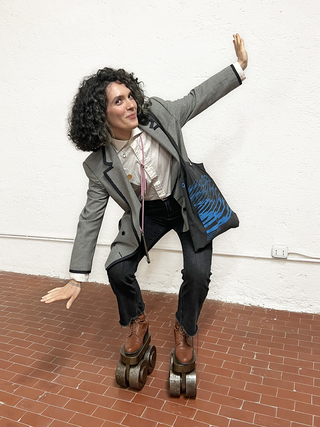
Portrait of Laura Paja on roller skates
Photo © Umberto Cavenago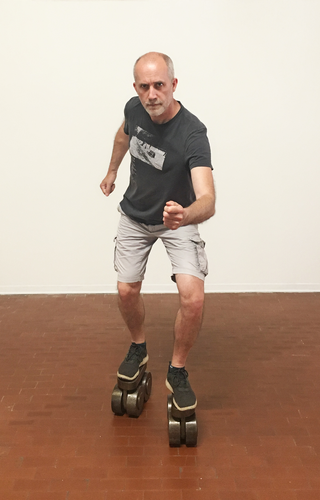
Portrait of Cesare Biratoni on roller skates
Photo © Luca Scarabelli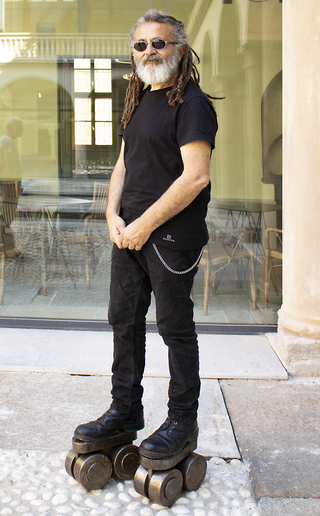
Portrait of Turi Rapisarda on roller skates
Photo © Umberto Cavenago
Portrait of Sergio Breviario on roller skates
Photo © Luca Scarabelli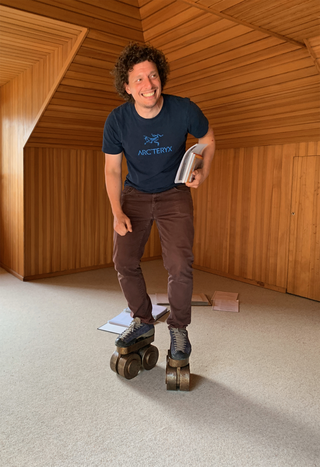
Portrait of Marco Torriani on roller skates
Photo © Umberto Cavenago
Portrait of Cecilia Mendasti on roller skates
Photo © Umberto Cavenago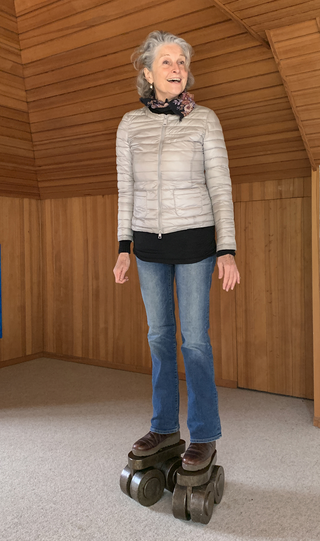
Portrait of Marisa Casellini on roller skates
Photo © Umberto Cavenago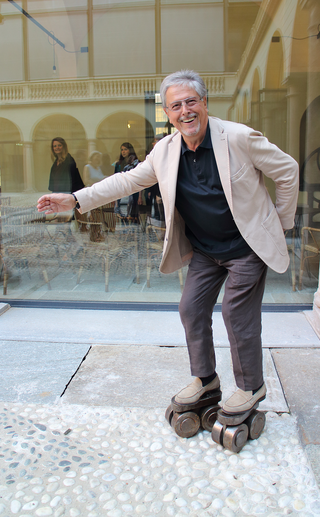
Portrait of Memo Basso on roller skates
Photo © Umberto Cavenago
Portrait of Carola on roller skates
Photo © Luca Scarabelli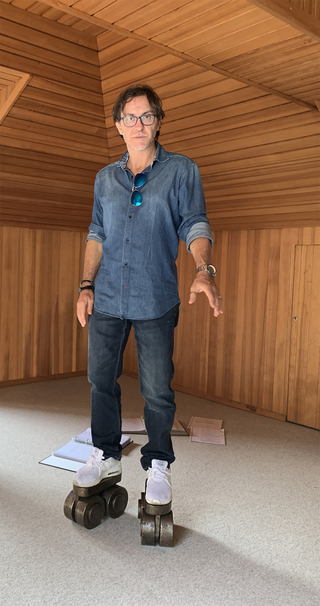
Portrait of Max Tosio on roller skates
Photo © Umberto Cavenago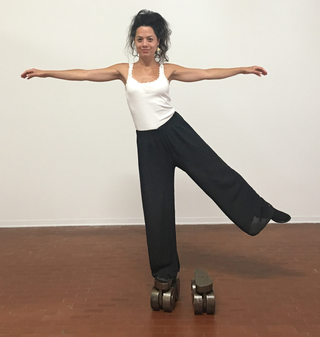
Portrait of Diana Dorizzi on roller skates
Photo © Luca Scarabelli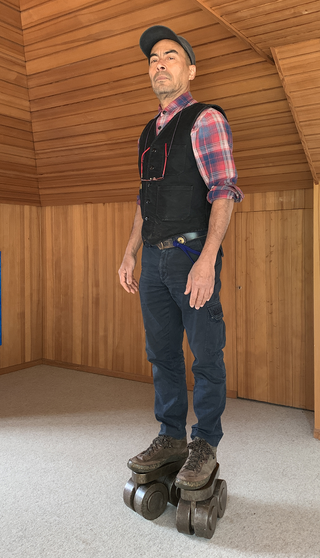
Portrait of Al Fadhili on roller skates
Photo © Umberto Cavenago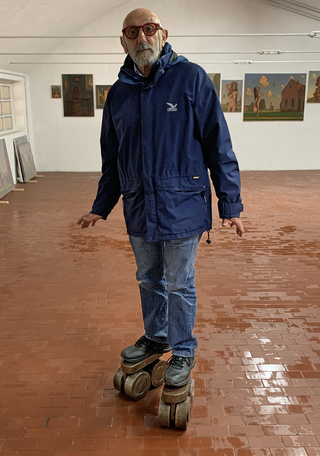
Portrait of Ermanno Cristini on roller skates
Photo © Umberto Cavenago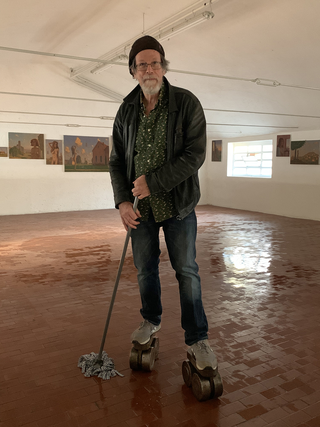
Portrait of Chris Terzi on roller skates during the installation of his exhibition Donne insolite at Riss(e) a Varese (30 octobre - 5 december 2021)
Photo © Umberto Cavenago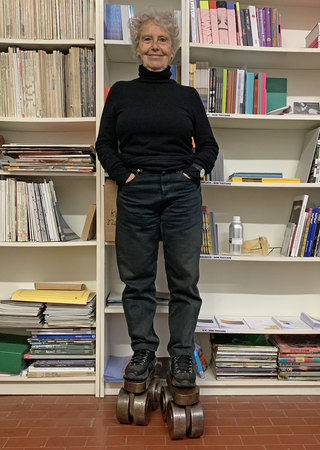
Portrait of Renata Boero on roller skates
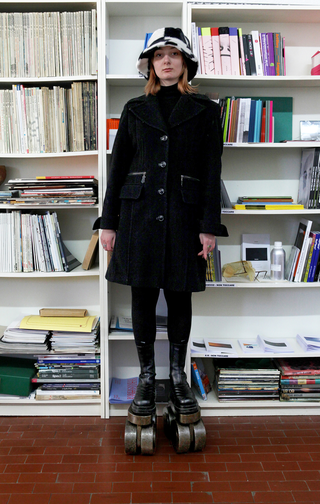
Portrait of Valentina Scarabelli on roller skates
Photo © Luca Scarabelli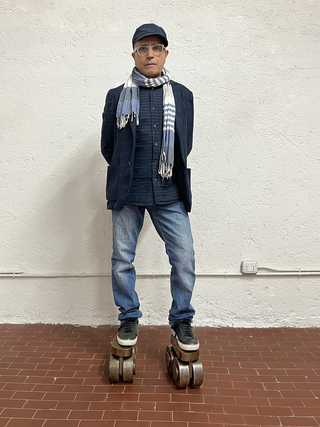
Portrait of Armando della Vittoria on roller skates
Photo © Umberto Cavenago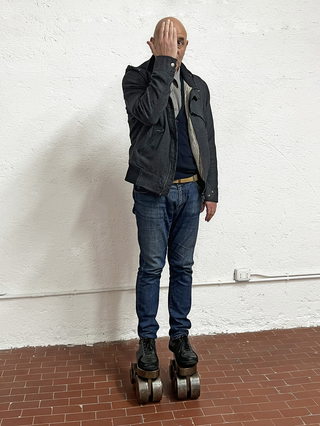
Portrait of Carlo Buzzi on roller skates
Photo © Umberto Cavenago
Portrait of Filippo Soli on roller skates
Photo © Umberto Cavenago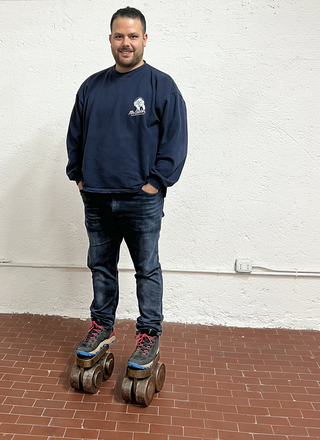
Portrait of Angelo Leonardo on roller skates
Photo © Umberto Cavenago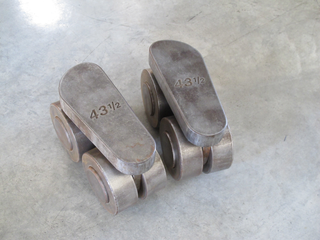
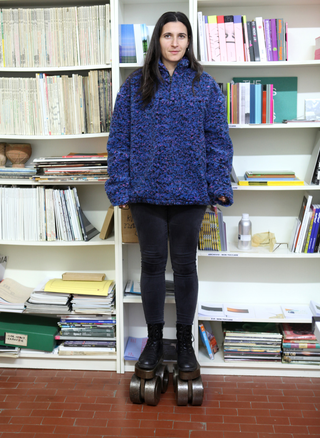
Portrait of Cecilia Mentasti on roller skates
Photo © Luca Scarabelli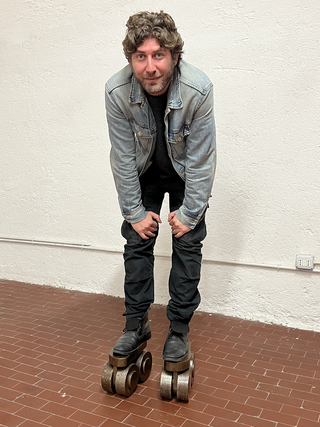
Portrait of Andrea Pizzari on roller skates
Photo © Umberto Cavenago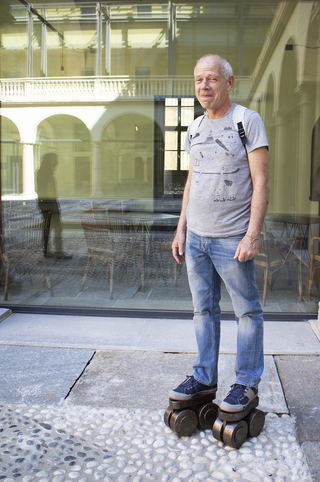
Portrait of Daniel Fuss on roller skates
Photo © Umberto Cavenago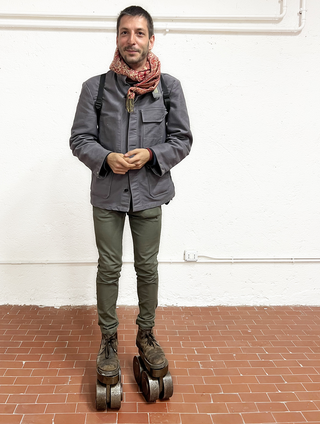
Portrait of Francesco Conti on roller skates
Photo © Umberto Cavenago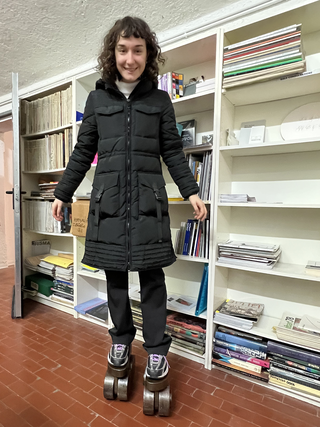
Portrait of Valentina Bobbo on roller skates
Photo © Umberto Cavenago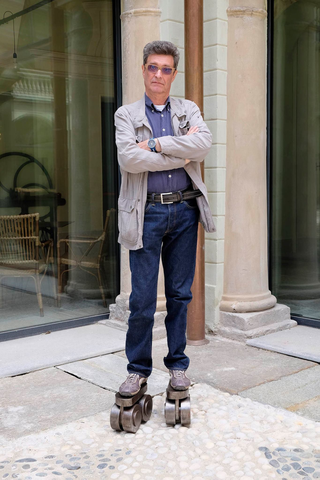
Portrait of Massimo Forchino on roller skates
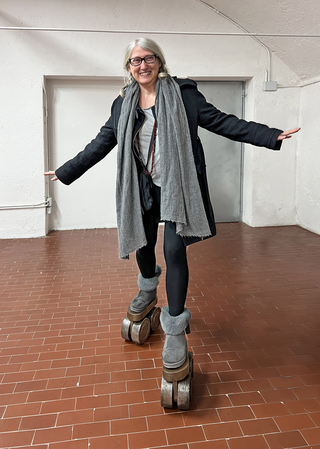
Ritratto di Rosalia Pasqualino di Marineo (marzo 2024)

Ritratto di Carlo Dell'Acqua
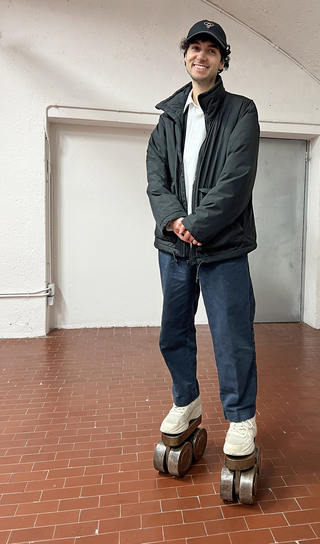
Ritratto di Mirco Marino sui pattini (marzo 2024)
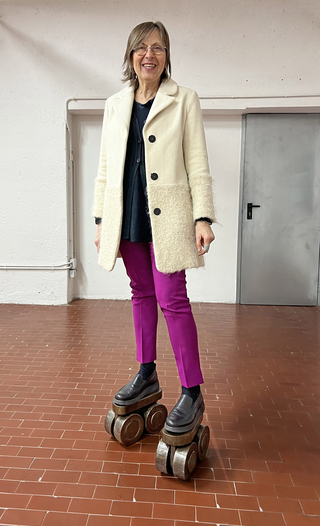
Ritratto di Elisa Bollazzi - MICROCOLLECTION (marzo 2024)

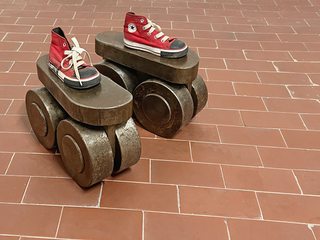
© Armando della Vittoria
Social
Contatti
umberto@cavenago.info